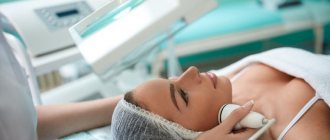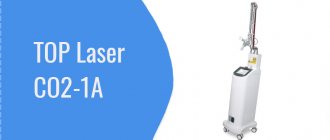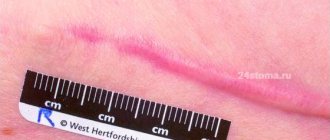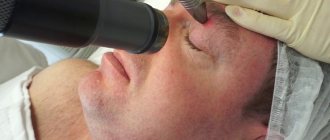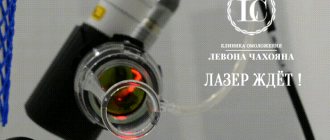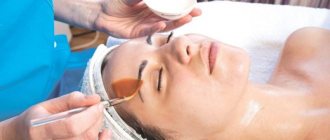When is the best time to start laser treatment?
Laser scar resurfacing can be done on any part of the body: face, décolleté, neck, legs, arms, abdomen, back.
The session takes place only after the site has been examined. To do this, palpation and exchange of information between the patient and the cosmetologist are carried out. The specialist must know the cause of the skin pathology, evaluate the client for possible contraindications, and only then prescribe the procedure. The size and depth of the laser beam, as well as the vibration frequency, are selected separately. As a result, after proper hardware treatment, scar tissue is destroyed and new elastic, smooth skin is formed.
If you contact a professional cosmetologist, you can remove the scar with laser within one year.
Fractional photothermolysis SmartXide DOT Punto. Laser resurfacing of the face, scars, scars.
Humanity has long been looking for a recipe for eternal youth and trying to create an elixir of beauty. However, the aging process remains relevant and continues to interest both scientists and practitioners. The first signs of aging are observed on the face, even when the body is in good physical shape.
The skin is a protective barrier for the entire body and is the first to encounter aggressive environmental influences. In this unequal struggle, it loses moisture, becomes thinner, and loses its ability to recover.
Dermal cells gradually stop producing collagen, which leads to a decrease in tone and elasticity. Age-related fluctuations in hormonal levels lead to changes in metabolic processes in subcutaneous adipose tissue and a decrease in muscle tone. Repeated sun exposure and exposure to harmful external factors accelerate natural aging, which leads to the formation of wrinkles.
Just a few years ago, traditional restoration using a pulsed carbon dioxide laser was considered the main method of treating wrinkles, scars, and sagging skin. However, due to the long recovery process, the high risk of complications, the presence of a number of significant contraindications, and the need for general anesthesia, not all patients were ready to undergo this procedure.
This state of affairs has stimulated the search for new treatment methods with high efficiency, minimal risks of postoperative complications and a short rehabilitation period.
The advent of fractional photothermolysis gave impetus to the development of a new method that managed to combine all the needs of both practitioners and patients.
SmartXide DOT Punto
is the latest system in the field of fractional laser skin restoration based on carbon dioxide.
Advantages of technology.
The peculiarities of the laser lie in the uniqueness of the emitted pulse, consisting of two parts: the first part has a high peak value and is capable of creating a hole in the epidermis (ablation), and the second part distributes laser energy into the tissue (thermal effect). Thus, with minimal damage to the epidermis, a large amount of energy is released in a short period of time and the effect of instant “tightening” of the skin is formed. This allows you to safely and effectively carry out procedures in the neck, décolleté, upper and lower eyelids, scars of various locations and etiologies, shorten the rehabilitation period to an average of 5 days and expand the capabilities of the technique.
The SmartXide DOT Punto system (dermal optical thermolysis) makes it possible to select the power and pulse duration of the laser beam, the distance between points, and the SmartStack
, a scanning method, which makes the procedure individual for each patient and makes it possible to work on all skin phototypes.
The SmartStack function consists of emitting a series of pulses in instantaneous sequence, hitting the same point 2 to 5 times. In this case, the impulse is divided in time, but the level of released energy remains high. The skin has time to cool down between pulses, which reduces the degree of erythema after the procedure, maintaining the “tightening” effect.
Opportunities in cosmetology and aesthetic medicine
- Fractional laser skin rejuvenation ( laser resurfacing
) - Elimination of pigmentation of any etiology
- Correction of scars of any etiology (including post-acne)
- Elimination of wrinkles and stretch marks
- Removal of tumors
THERE ARE CONTRAINDICATIONS, SPECIALIST CONSULTATION IS REQUIRED
Patient age
Removing marks after injuries in adulthood is much more difficult than for young people. This is due to the fact that the elasticity of the skin gradually decreases. Therefore, it will take a lot of effort to build up a healthy appearance and provoke the growth of fibroblasts using a laser. It will take a long time to cope with old scars.
For the purpose of blepharoplasty, laser resurfacing is performed at any age. They do it to rejuvenate, reduce skin sagging, and reduce wrinkles. The procedure takes place without surgical intervention, and this makes it safe. The main thing is to find a specialized specialist with high-quality equipment.
How is laser scar removal surgery performed?
The essence of laser scar removal is that scar tissue is removed layer by layer. Using an erbium laser, the epidermis is evaporated. At the same time, the depth of impact is strictly controlled. As a result, blood circulation improves at the scar site, lymphatic drainage improves and the formation of healthy skin is stimulated.
Depending on the amount of scar tissue, the doctor decides what type of anesthesia to use: local or general. In normal cases, local anesthesia is used.
If the scar is small, the person does not feel pain during the procedure, but only a slight burning sensation.
Scar treatment takes place over several sessions. Usually these are two or three procedures, with an interval of three to four weeks or a month. If the scars are quite large, it may take up to 10 months.
Duration of scar formation
Laser scar resurfacing can be done after natural healing of the wound: this period lasts from 3-6 months. Treatment should begin with special creams and gels, and after six months it is allowed to switch to hardware therapy. The recovery process becomes more difficult after one year.
In practice, atrophic and keloid changes are the most difficult to cope with: in the latter case, surgical removal of excess tissue may be required.
Factors causing the “gauze effect”
- individual skin characteristics (for example, a tendency to form keloid scars);
- the nature of the problem being corrected;
- selected procedure parameters (for example, the thickness of the treated dermis and epidermis);
- failure to follow doctor's recommendations.
It is important to understand that laser resurfacing is a deep peeling procedure, which has its own rehabilitation characteristics. The “gauze effect” is not a complication of the procedure, as many people mistakenly believe. This is a normal reaction of facial skin to correction performed by a laser device. Most often, the “gauze effect” appears after hypercorrection, when the update requires deeper laser intervention.
The duration of the “gauze effect” manifestation is a rather individual parameter of the laser resurfacing procedure. The period of its disappearance can take from 10 days to several months of rehabilitation. Once the skin restoration is complete, patients can experience noticeable results from the procedure.
Presence of contraindications
The session is scheduled after a conversation with the patient, when the degree of risk is determined. But in most cases, laser scar resurfacing can be done if contraindications are met:
- no pregnancy;
- the infant is not fed;
- blood clotting is not impaired;
- no skin diseases - psoriasis, eczema, vitiligo, dermatitis;
- no diabetes mellitus;
- pressure does not increase.
The procedure is also contraindicated for scleroderma and collagenosis.
What are the benefits of laser scar removal?
- The operation is very effective, as it makes it possible to completely remove the formation.
- During the procedure there is no contact with the wound, which means there is no danger of infectious tissue infection
- Scars of different sizes can be removed
- It is possible to provide a targeted effect without affecting healthy tissue
- The operation is bloodless (what is its main difference from surgical removal of a scar)
- Since the effect of the erbium laser is very gentle, there is no hyperpigmentation after the procedure.
- According to patient reviews, there is no serious pain during the operation.
What is laser resurfacing?
At its core, laser scar removal is not resurfacing in the literal sense of the word. The meaning of the effect is to apply multiple perforations to the surface of the scar with a microscopic laser beam through a special mesh attachment. This effect reduces the area of the scar due to the evaporation of part of it in the affected area, and also promotes the migration of elements of healthy skin tissue into the scar through perforations. As a result, the scar decreases in size and becomes invisible.
How is the rehabilitation going?
After surgery, the skin recovers within five days. During this postoperative period, care must be taken not to damage the site where the procedure was performed. You should not play sports, visit the sauna, swimming pool or bathhouse.
The skin at the site of exposure must be treated with special antiseptic solutions and lubricated with ointments and creams to treat burns.
It is important to wait for the resulting crust to peel off on its own.
After the procedure, you should avoid direct sunlight on the scar for one and a half months. In cases where several procedures are required to completely remove a scar, it is very important that the body has time to recover within three weeks.
The essence of the procedure
In the first stages, grinding reduces the depth of scar formations. In the future, the scar can be removed almost completely.
Laser resurfacing of facial scars occurs according to the following principle. First, the laser removes the stratum corneum that makes up the scar itself. In the freed area, cells begin to divide intensively, and natural production of collagen and elastin occurs. Thanks to these substances, a new layer of healthy, smooth skin is formed in the scar area. The device has a built-in cooling system, which prevents overheating of the epidermis from laser beams. We are also seeing a significant reduction in recovery time after the procedure.
After laser treatment, thin channels will remain in the skin tissue, where new cells will begin to form over time. Dead skin particles will evaporate through small holes that are formed in the upper skin due to the action of the device. The rest of the skin surface will not be affected by the laser. Its appearance and internal structure will remain the same.
On the face, laser resurfacing even removes scars from sensitive areas such as the eyelids and lips.
Professionals advise visiting a cosmetologist as soon as possible after the damage has healed. Those scars that have been on the skin for less than six months are removed quickly and almost completely. Usually one or two procedures are enough for this. Deep damage requires longer correction.
Using the laser resurfacing method, you will get the following effect:
- smoothing the skin surface;
- changing the color of the scar to a normal healthy shade;
- gradual and complete removal of the scar.
In the photo: a device used for laser resurfacing of scars.
The optimal period for visiting a cosmetologist for a course of procedures is autumn or winter (cold season). It is important that during the recovery stage the skin is protected from sunlight. Immediately after the session, she is irritated by the laser, and ultraviolet light can provoke the formation of dark spots near the scars (due to increased melatonin production).
Laser facial resurfacing should only occur after prior consultation with a cosmetologist. A professional will take into account not only the size and time that the scar is on the skin, but also the characteristics of your body.
Read material on the topic: Removal of warts with laser: technology, consequences, recommendations
What lasers are used for resurfacing?
For example, erbium. This is when a laser beam heats pigments in the skin and destroys the structures that contain these pigments, but at the same time the surrounding tissue remains intact. This technology is effective for removing age spots and vascular defects, but is ineffective for rejuvenation.
Lasers operating on a fractional principle are better suited for rejuvenation. First of all, this is the American Fraxel (Fraxel). It also copes well with all skin blemishes.
The following types of scars are distinguished:
- Normotrophic. Such scars occur during the normal course of healing processes. They are white in color and go flush with the surface of the skin.
- Atrophic. They occur when collagen formation is insufficient. In appearance, they are slightly recessed in relation to the surface of the skin.
- Hypertrophic. Formed by an excessive reaction of connective tissue. Such scars are usually pink or purple in color, raised above the surface of the skin, dense, shiny. The scar area is limited to the injured area (this is their main difference from keloids).
Keloid scars, unlike hypertrophic scars, grow beyond the damaged area of the skin, often resembling a tumor.
Depending on the type of scar, laser treatments with different parameters are performed. In some cases, surgical excision of the scar is first proposed, followed by the application of a cosmetic suture (to transform a flat scar into a linear one), and then laser resurfacing to achieve the best cosmetic result.
